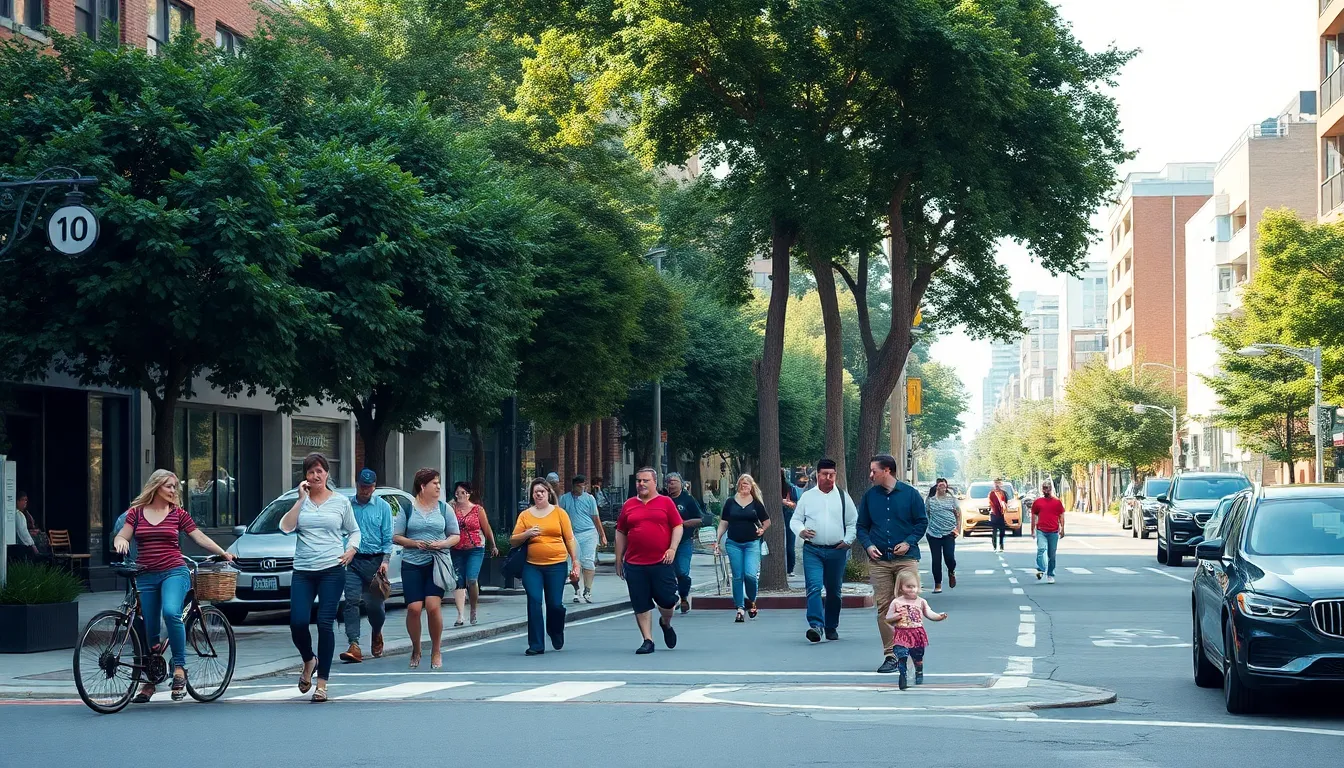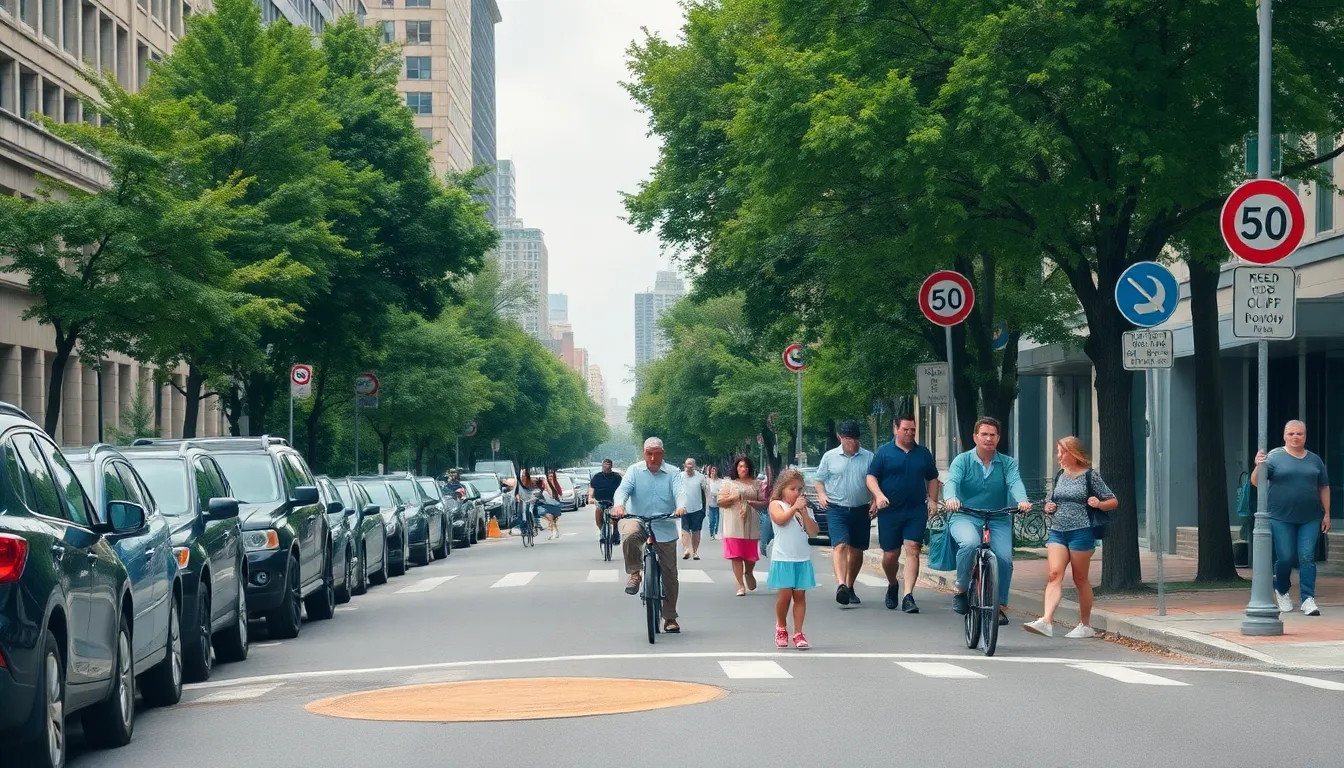In today’s fast-paced world, the call to “slow the car down” resonates more than ever. As urban areas become increasingly congested, the need for safer streets and mindful driving has gained traction. This movement isn’t just about reducing speed; it’s about fostering a culture of safety and awareness for all road users.
Recent discussions in outlets like The New York Times highlight the alarming statistics surrounding traffic-related incidents and the pressing need for change. Advocates argue that by slowing down, drivers can significantly reduce the risk of accidents, protect vulnerable pedestrians, and create a more harmonious environment for everyone. As communities grapple with these challenges, the conversation around responsible driving continues to evolve, urging individuals to reconsider their approach behind the wheel.
Table of Contents
ToggleOverview of “Slow the Car Down NYT”
“Slow the Car Down NYT” reflects a broad initiative aimed at addressing urban congestion and enhancing road safety. This movement encourages drivers to adopt slower speeds, fostering a safer environment for pedestrians and cyclists. Statistics from The New York Times highlight how reduced speeds contribute to lower accident rates, effectively demonstrating the benefits of this cultural shift.
Advocates for the movement emphasize education and awareness as critical components. Changing public attitudes towards speed limits encourages compliance with traffic regulations, leading to safer streets. These advocates promote initiatives such as speed bumps and reduced speed zones, targeting high-traffic areas with a history of accidents.
The movement also aligns with urban planning efforts focused on creating pedestrian-friendly spaces. City officials and community leaders are increasingly recognizing the importance of traffic calming measures in promoting public safety. As discussions around responsible driving evolve, the “Slow the Car Down” campaign serves as a vital part of the conversation surrounding urban mobility and safety.
Key Themes Explored


The “Slow the Car Down” initiative underscores several important themes centered around enhancing urban safety and environmental sustainability in response to rising traffic concerns.
Impact on Urban Safety
Reducing vehicle speeds significantly impacts urban safety. Studies show that lower speeds correlate with decreased accident severity and mortality rates. The New York Times highlights research indicating a 25% reduction in pedestrian fatalities for every 1 mph decrease in speed. Speed calming measures, such as speed bumps and reduced speed zones, also play a vital role in protecting vulnerable road users, including cyclists and pedestrians. Advocates stress the importance of integrating safety education as part of community outreach initiatives, aiming to shift public perceptions regarding speed and road responsibility.
Environmental Considerations
The movement towards slower driving speeds contributes positively to environmental sustainability. Slower speeds lead to lower vehicle emissions, as they often result in improved fuel efficiency. According to The New York Times, reducing congestion and encouraging alternative modes of transportation, such as walking and biking, helps decrease traffic pollution. Urban planners emphasize the need for green spaces and pedestrian-friendly designs that complement the “Slow the Car Down” movement, promoting a healthier urban ecosystem while enhancing community engagement and mobility options.
Public Reception and Feedback
The “Slow the Car Down” initiative has generated diverse reactions from the public, reflecting the intersection of urban safety and community values.
Community Responses
Community members actively engage with the initiative, sharing their support for measures that enhance road safety. Residents report increased awareness of pedestrian safety concerns and express gratitude for initiatives like speed bumps that protect vulnerable road users. Town hall meetings and social media platforms serve as venues for discussion, with many advocating for broader implementation of traffic calming measures in high-density areas. Surveys indicate that approximately 70% of community members favor reduced speed limits around schools and parks, highlighting a collective desire for safer neighborhoods.
Critiques and Support
Critics of the “Slow the Car Down” campaign argue that reduced speed limits can lead to traffic bottlenecks and frustration among drivers. Some motorists express concerns about the balance between safety measures and traffic flow. However, supporters counter these arguments by emphasizing the long-term benefits of reduced speeds, such as lower accident rates and improved community cohesion. Data from urban planning studies suggests that areas with implemented speed reduction strategies experience a 15% decrease in overall traffic incidents, bolstering the case for continued advocacy and implementation of traffic calming measures. The conversation continues as various stakeholders seek to align on the best strategies for improving road safety.
Effectiveness of the Initiative
The “Slow the Car Down NYT” initiative demonstrates notable effectiveness in enhancing urban road safety and addressing traffic congestion. Studies show that a decrease in vehicle speed correlates with a significant reduction in accident rates. Specifically, research indicates that pedestrian fatalities drop by 25% with each mile-per-hour reduction in speed.
Education and awareness play pivotal roles in transforming public attitudes towards speed limits. Initiatives promoting driver compliance with traffic regulations result in measurable impacts on community safety. For instance, implementing speed bumps and establishing reduced speed zones in accident-prone areas significantly lowers collision occurrences.
The initiative aligns with urban planning goals focused on pedestrian-friendly environments. City officials increasingly prioritize traffic calming measures, recognizing their effectiveness in fostering safer public spaces. Community feedback reflects a strong preference for strategies that enhance road safety, including approximately 70% of residents supporting reduced speed limits near schools and parks.
Despite opposition claiming reduced speed limits create traffic congestion, advocates highlight the long-term advantages of slower speeds. Data from urban studies reveal a 15% decline in overall traffic incidents in areas adopting speed reduction strategies. This reinforces the initiative’s significance in promoting sustained advocacy for road safety and community cohesion.
Overall, the “Slow the Car Down” initiative stands as a vital component of the broader discussion surrounding urban mobility, safety, and sustainability.
The “Slow the Car Down NYT” initiative represents a vital shift in urban mobility and safety. By promoting reduced speeds advocates aim to create safer streets for everyone. This movement not only addresses traffic congestion but also fosters a sense of community and awareness among road users.
As cities evolve the need for responsible driving habits becomes increasingly clear. Engaging residents in discussions about speed limits and safety measures can lead to lasting change. The positive impact on pedestrian safety and environmental health cannot be overstated.
Ultimately the success of this initiative depends on collective efforts from community members city officials and urban planners. Together they can create a safer and more sustainable urban landscape for all.



